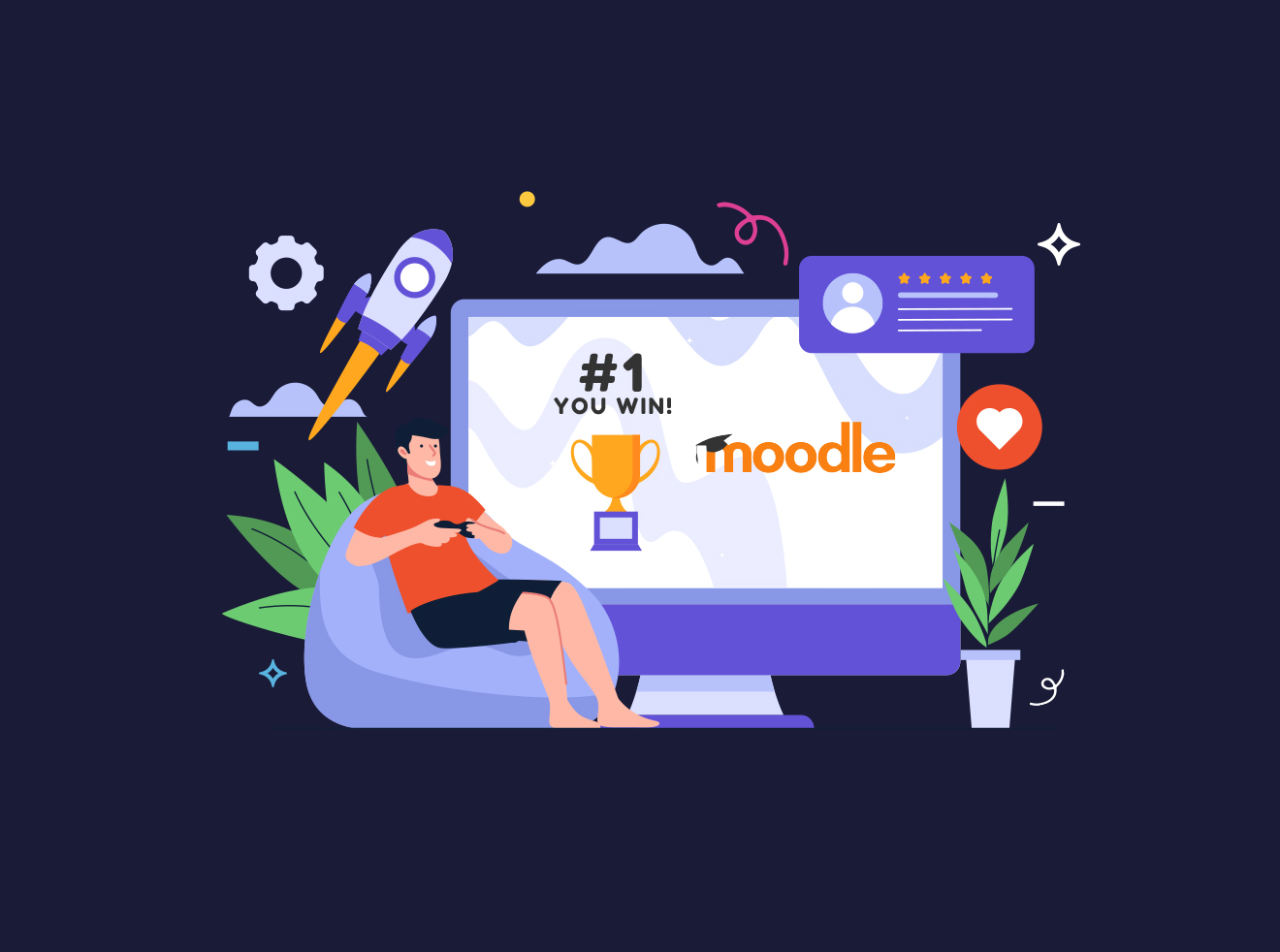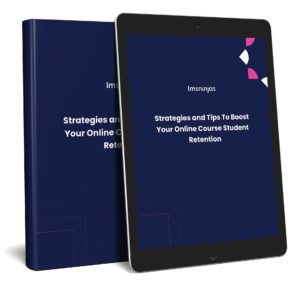An online course launch can be intimidating, especially if you are doing it for the very first time. It has many moving parts, from selecting a topic to offering content for sale online and expanding your audience.
As important as a website and contact number are, the online course should be in the toolkit of any entrepreneur, expert, or thought leader.
You are demonstrating beyond a reasonable doubt that you are an authority on your topic, a skilled practitioner of your craft, and a knowledgeable member of your industry by teaching it.
Making an online course is one of the quickest and most effective methods to share your knowledge with a worldwide audience, have a more significant influence, and earn more money.
The creation and design of course content is only the initial phase. The next steps in developing and marketing online courses are the most crucial.
Following the completion of your online course launch, there are a few crucial tasks to do.
Steps to Take After You Launch Your Online Course
So, your online course is completed and you have just launched it. What do you do, then? Do you have an odd feeling of resistance? like though something should be done? If yes, then you are right.
After the creation stage is complete, there are several essential steps to complete if you are building online courses or have already launched an online course.
Here they are:
Promotion Via Emails

So, before you officially launch your online course, you should start marketing it. However, you still need to maintain the momentum. You must intensify the promotion after it has been launched.
You cannot abandon your beautifully designed, useful, and successful online course in a hidden location or buried deep within your LMS.
You can use email marketing to promote your course effectively and it can boost student enrollment, increase course attendance, and ultimately yield a profit for your business.
Here are some ideas to help you after your online course launch;
A compelling subject line will grab the attention of your subscribers. Your subscriber’s first name should also be in the subject line of emails to increase open rates.
Your value proposition basically has to tell your subscribers what your online course is about and why they should enroll in it. You can express that value to your subscribers through a well-written value proposition. You should also be able to concisely describe the benefits of enrolling in your online course in your value proposition.
A sense of urgency should also be used to your advantage. Create a sense of urgency in your promotional email to encourage readers to respond. It is to take your online course in this instance.
Adding a CTA button completes the process of creating your promotional email. It links together all the other components of your email and offers subscribers the chance to take action.
Content (SEO blogging) Marketing Campaign

A tried-and-true strategy for promoting any company, brand, or good is content marketing. It’s a simple and affordable approach to reaching your target audience with courses.
Online course promotion can be done by instructors in any niche using content marketing. Content marketing is one of the best strategies, especially for those who are just getting started and running online programs on a tight budget. The process is simple for instructors because developing content and developing online courses are similar.
However, it’s not just about creating content on your blog, it’s about creating content that ranks on google through SEO (search engine optimization).
Creating content that will rank in the search results requires some technical knowledge of how SEO works and that’s why we suggest that you reach out to our partner content marketing experts to help you with the process.
Following your content on search engine result pages or other places, audiences eventually turn into paying clients. Therefore, the primary objectives of content marketing are to increase website traffic, increase conversions, and raise consumer awareness of the company, goods, and brands through content.
Share Preview Material On YouTube

YouTube is the world’s second-most popular search engine. YouTube is a popular site for learning and for promoting online courses, in addition to being a source of pleasure.
Creating a Channel Trailer is the ideal approach to start promoting your online course. This is how a lot of companies convert visitors into subscribers on their channels.
A channel trailer is a video you can make to introduce viewers to you and your brand on your YouTube channel. It is advised to keep the video brief, i.e., between 30 and 90 seconds
The trailer should open with a brief introduction of you and your channel, then feature a few clips from your course material before asking people to subscribe.
Do not forget that getting people to sign up for a premium course is not your top priority. Simply informing them about your channel will encourage them to subscribe.
After a visitor subscribes, you can continue to build your relationship with them by showing them more useful videos. These videos ought to outline who your sponsored content is intended for, what those benefits are, and what they may anticipate from further content.
The main objective of these videos is to encourage viewers to sign up for your premium course content.
A call-to-action that expressly instructs viewers on what they should do next should be included in the video as well.
Testimonials should be the last component in this aspect because uploading testimonial videos to YouTube can significantly impact visitors. Your course will be far more likely to be purchased by viewers if they are aware that others have already purchased it and found value in it.
Maintain Student Engagement

As soon as your course is launched, your top priority should be to develop a community of devoted followers. Most instructors make too many promises and deliver too little.
You should do the opposite—underpromise and overdeliver—to win over your students and win their loyalty.
The significance of active learning should also be emphasized. Students who engage in active learning can connect the content to their own experiences and apply it to their everyday lives.
The following suggestions can help your students communicate with one another more and share their learning experiences: online group activities, live sessions, and discussion forums.
Building an online community is a great way to get students to talk about subjects relevant to your online courses. You should aim to hold discussions that will stimulate the minds of your students and foster dialogue.
Users can post questions on discussion boards in general, and other students can then respond with answers or potential answers. Trainers keep an eye on the conversations and offer some assistance in getting to the solution.
Maximizing Customer Loyalty
While the majority of course creators become fixated on acquiring new students, the secret to becoming lucrative is actually growing your customer lifetime value by upselling to your current clients.
Your expected profit when a new student enrolls in your course is known as your customer lifetime value.
Provide coaching. By adding coaching to your main offering, you can enhance your customer lifetime value (CLV) more quickly. A fantastic technique to raise your CLV and assist your students in succeeding more is through coaching.
Establish a continuation course. An online course that lasts for a specific period of time is called a continuity course. The length of continuity programs, such as membership sites, can range from three months to a year. You can earn recurring money each month without having to develop a new product with these programs.
To have more peace of mind and assure a recurrent income, it is ideal to keep customers and ensure a steady student base for your online course. You must not lose sight of your loyal customers even though it’s important to concentrate on those who are at risk of leaving.
Since a customer perceived value and invests in your course content, nothing makes him more unhappy than watching several offers and concessions being made to new customers while he receives nothing.
The more customers spend and engage with your company, the more they benefit from discounts, special offers, cost-free training, and other incentives.
Your target audience will continue to be happy as long as you inspire them to make more purchases since they are also content with the experience as a whole, not just with your products.
Collect Feedback
One of the most important resources you have at your disposal for professional growth is evaluating your online course and getting feedback from students and students. You are missing out on a learning opportunity if you don’t ask for feedback or assume that you’ve done a good job and everything was ok; this is something you would never want your students to do.
If you don’t know what your customers think of your courses, it might be challenging to make improvements. You need to obtain feedback from the people who consume your course content in order to know what steps to take to improve it.
Make it a practice to make surveys or polls to get feedback from the students on the course, or to engage them in the co-creation of future online courses.
Based on student feedback, upgrade your course. In terms of versions, you should approach your course in the same manner that programmers approach their products. Version 1.0 of your work has already been completed; version 2.0 and later versions will be developed using student feedback.
In order to improve the user experience, you should examine the data once it has been collected to search for patterns in consumer behavior and trouble spots.
Recycle Courses
As time passes, forgetting things is a natural tendency for learners. Every one of us does. Reuse and recycling are terms we use in teaching. In other words, you can decide how to remind your students of the material they’ve studied every 3 to 6 months, or in a period of your choice.
However, microlearning can be used as a refresher strategy if you don’t want to repeat the entire course. This can add to your current program and provide you with an entertaining follow-up to your training.
To help students fully retain what they learned and reinforce it, consider sending out a summary quiz or an engaging video a week or two after the course has ended.
Monitor And Evaluate
You should begin evaluating how effective your online course is as soon as you launch. Even if the course has excellent information and a fantastic design, it generally isn’t worth the effort if you can’t gauge its effectiveness.
Once you’ve evaluated and analyzed your course analytics, it’s time to revamp your old online courses.
This method of constant improvement, adjusting and changing, and comparing is a particularly creative technique to advance your online course strategy.
E-learning Website Maintenance
Website is continuously updated as technology advances to make it safer, faster, and more accessible search engine and frequently, even simpler to use.
You should regularly update your website. By doing this, you can guarantee that your E-learning website is constantly open and available to students. You must continue to monitor LMS performance after launch using emulators and mobile devices.
You might assume that performing this maintenance will not be that difficult. There may be times when updates cause the site to stop functioning properly. If this happens, would you know which plugin update was the main cause? What if, even worse, an upgrade causes the entire website to crash? You might spend more than you think on your site’s maintenance if you do it yourself.
We suggest that you employ the services of our partners, experts in e-learning website maintenance, to save time, and resources and have the best functionalities on your website.
Mistakes To Avoid After You Launch Your Online Course
In creating and launching an online course, there are some mistakes you should avoid. Some of them include:
1. Not Beginning With Your Audience in Mind
Consider your ideal audience and the issues they face as your very first step, even before you begin creating your course outline. If you can help your audience by solving an issue they are having, your course will be successful.
2. Broadening the Scope of Your Online Courses
The issue of not being able to give their students enough value arises frequently when an online course creator chooses a topic that is too broad.
It will be challenging to develop a course that is of good quality and adds enough value if you try to teach everything there is to know about a particular subject. Additionally, promoting your course to those with an interest in that subject will be challenging.
However, you’ll be able to add more value and increase your income if you concentrate on creating a top-notch course on a certain subject. Due to your ability to target a particular demographic, you will also be able to sell your course more successfully.
3. Marketing to Everyone
Instead of focusing on a particular niche, course designers frequently make the mistake of trying to appeal to everyone.
Making your online course appealing to as many people as you can when you first start out can be tempting. However, this is wrong.
Your ability to draw students interested in taking your courses will increase the more specialized your niche can be. Additionally, because your target market will be aware of who the course is for when you concentrate on a narrow niche, you’ll have a higher chance of making more purchases.
4. Not Taking the Student Experience Into Account
The overall student experience and learning objectives are two of the most crucial factors in course development. Your course will almost certainly fail even if it has excellent content and a poor student experience.
Not only should the course creator consider what they want to teach the students, but also how the students will learn and what they will be able to do after completing the course.
5. Not Creating an Online Community
Making an online course without first establishing credibility and trust with an audience is another typical mistake that creators of online courses frequently make.
Finding out what potential students think of your course idea is one of the finest methods to validate it. Building an audience and a community first is another excellent strategy to gather feedback. This will enable you to design a course that learners genuinely need and want.
How to succeed after you launch your online course?
So there you have it, the plan for life success after creating an online course. All you need to do is advertise, engage students, solicit feedback, assess the results, make necessary adjustments, and keep students informed even after the course is over. However, you can chat with our LMS experts about your online course and how to make it successful if you run into problems and need support.




